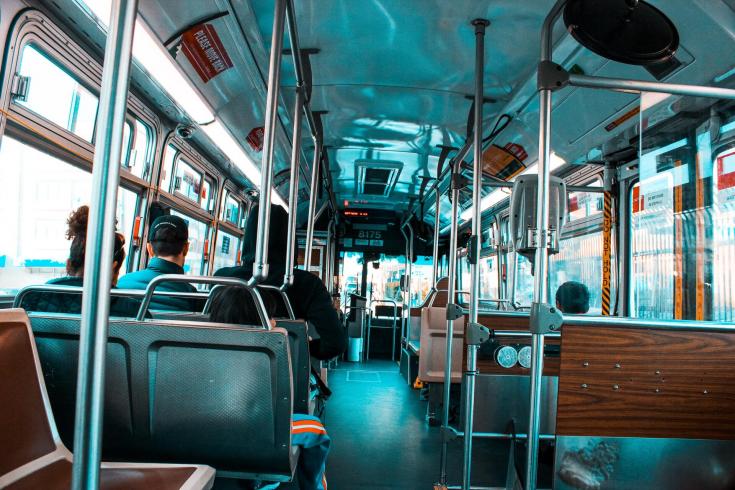Supporting mobility in rural regions

Public transport is a lifeline for many rural communities, particularly for the elderly, young people, tourists and those who are economically marginalised.
Low population density in rural regions results in fewer economic and social opportunities, which are instead found in urban areas, making transport an essential service. However, the low population density of rural areas presents significant challenges for the economic sustainability of convenient public transport provision.
Rural regions now face an even tougher reality in the wake of the COVID-19 pandemic, with fewer people willing and able to travel by public transport due to business closures and enforced social distancing. Falling user numbers are further straining the economic sustainability of public transport systems.
However, local and regional public authorities must still provide public transport options to ensure inclusivity of vulnerable groups, as well as reducing carbon emissions by reducing private motor vehicle use. As such public transport systems need to be adapted to become more customer friendly and cost effective.
A number of Interreg Europe projects have explored the issue of sustainable rural transport and can provide inspiring good practices for public authorities to model their efforts on.
Route changes
A fundamental starting point is to take account of the current situation and see how it can be optimised. Saale-Holzland-County (Germany) is a region with many rural settlements with small populations. In order to ensure adequate provision of transport, the public transport network which had grown sporadically with no centralised planning, was re-organised with the principle that, 'Every citizen should have a minimum range of mobility options available by public transport, irrespective of the availability of an individual car'. With this public commitment, the region ensured that all villages would have at least one connection to a nearby city that could act as a transport hub. The reorganisation resulted in both increased use of public transport and a reduced requirement for public subsidies.
On-demand bus services
On-demand public transport options are becoming more and more popular for tackling the issues of rural transport where fixed systems are costly. On-demand services can run only when needed, running either a set route with drop off and pick up points determined by demand, or with more flexible routes that can go door-to-door.
One such example of the latter, demonstrating significant flexibility, is the EcoBus pilot project, in the County of Northeim in Saxony, Germany. The EcoBus operated in the rural area of Bad Gandersheim, combining different routes with similar start and end points. The on-demand service could be booked via app, phone or website, providing accessible booking for people of differing technological aptitude and means. Though some economic challenges remain related to scale and cost, with the phone reservation system being a particular cost burden, requiring, as it does, human resources and not only a computerised system, the pilot project was well received and well used and further roll-out is intended.
A more proven system can be found in the Local Link Rural Transport Programme in Waterford, Ireland, which consists of fifteen public transport companies, operated by the local community, that responds to the community’s needs. Specifically, it links villages and towns with existing transport nodes and local attractions, making connections to a wider transport networks easy. The Local Link programme is a brand under the Irish National Transport Authority, which funds the local networks (the remainder of the financing is raised from passenger fares). The service provides a combination of scheduled and flexible services, providing home-to-hub services, with bookings made by phone or email.
Vehicles sharing
For a fully on-demand service, the FLUGS e-carsharing programme in East Tirol, Austria, is targeted at rural areas, to tempt people away from their own polluting vehicles with a publicly accessible low-carbon mobility option. Whilst car-rental is traditionally not regarded as public transport, if used intelligently, it can provide a sustainable mobility option for rural areas. In East Tirol, eleven e-cars have been made available for rental by residents, specifically to supplement the public transport network with reservations made online or by phone. Further, efforts are being made to integrate the system into the existing public transport network information system.
Analysis of user needs
In dealing with limited resources, public transport providers can also choose to focus on specific target groups and needs in order to maximise the impact of their investments. In Madeira, a new service has been established for connecting the port of Funchal with the city centre specifically focused on those with reduced mobility. The investment came about as the city noticed that the existing network did not take account of the needs of the city’s elderly residents and tourists. The new service is comprised of mini buses with space for nine wheelchairs and rear-mounted electric lift to enable accessibility, operating on demand.
This article has drawn together practices from several Interreg Europe projects. For more information, visit the DESTI-SMART, LAST MILE, MATCH-UP, and OptiTrans websites. For more examples of on demand public transport, see the Policy Learning Platform’s Policy Brief on
